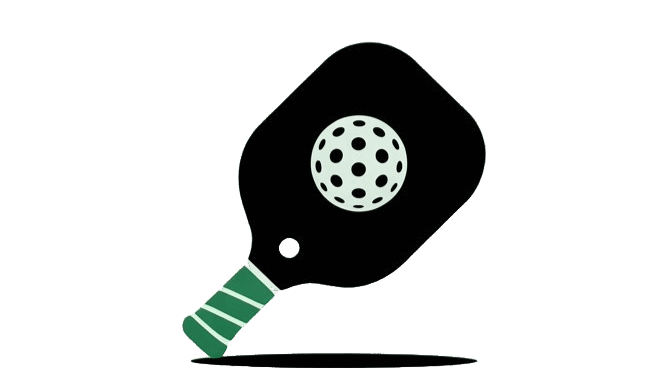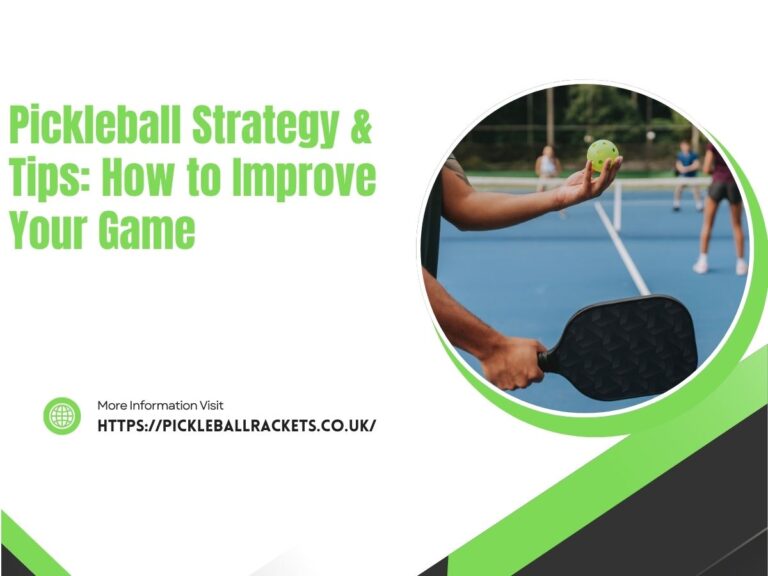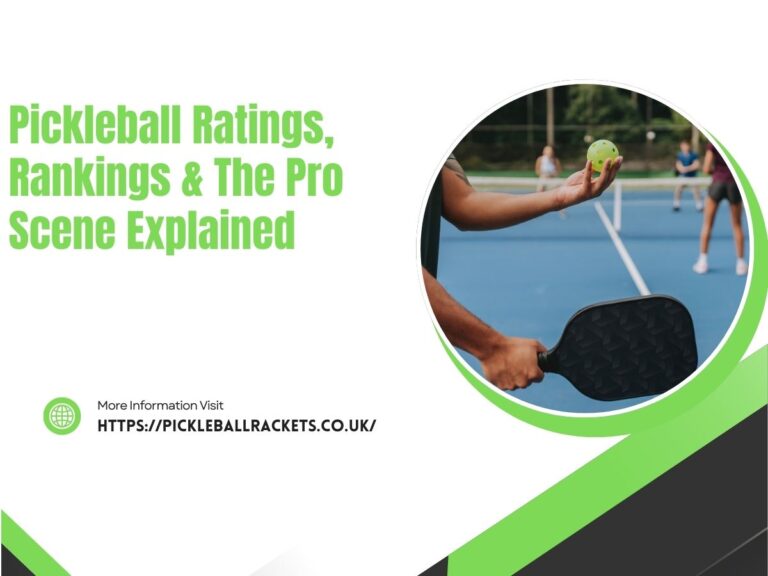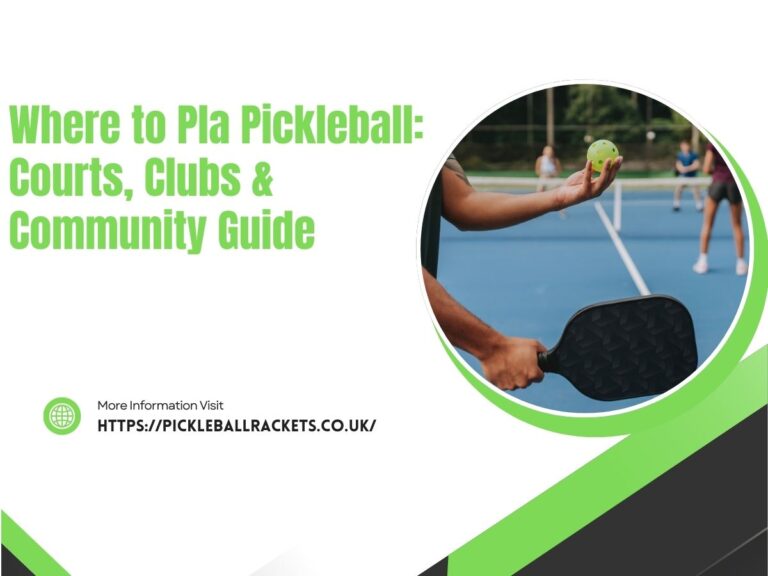You may have heard the distinctive pop-pop-pop sound drifting from a nearby park or seen courts once dedicated to tennis now filled with players wielding what look like oversized ping-pong paddles. This is the sound of pickleball, a sport that has captured the attention of millions and earned the title of the fastest-growing sport in America for several years running. What started as a backyard game in 1965 has transformed into a global phenomenon. But how did this quirky, paddle-based sport become so incredibly popular?
This article dives deep into the rise of pickleball. We will explore its staggering growth statistics, uncover the reasons behind its widespread appeal, and look at what the future holds for this dynamic sport. Whether you’re a curious beginner or a seasoned player, we’ll explain why pickleball is more than just a passing trend and why its popularity continues to soar across the globe.
How Popular Is Pickleball Today? A Global Snapshot
Pickleball’s ascent from a niche hobby to a mainstream sport is nothing short of remarkable. What was once primarily a pastime for retirees in sun-belt states has now been embraced by people of all ages and athletic abilities worldwide. The sport’s growth isn’t confined to a single region; it’s a worldwide movement gaining momentum on every continent.
Pickleball in the United States
The United States is the epicenter of the pickleball explosion. For three consecutive years, the Sports & Fitness Industry Association (SFIA) has named it the fastest-growing sport in the nation. The numbers behind this claim are staggering. According to the 2023 SFIA Topline Participation Report, the number of pickleball players in the US skyrocketed by 85.7% year-over-year and an incredible 158.6% over three years.
Initial estimates suggested around 8.9 million players in 2022, but a 2023 study by the Association of Pickleball Professionals (APP) revealed an even more massive following. The study indicated that approximately 36.5 million Americans—or about 14% of the adult population—played pickleball at least once between August 2021 and August 2022. This demonstrates a level of participation that rivals more established sports. The sheer scale of its adoption in the US has created a domino effect, fueling its growth internationally.
Pickleball Growth in the UK and Europe
While the US leads the charge, the United Kingdom and continental Europe are quickly catching on. Pickleball England, the sport’s governing body in the country, has seen its membership and the number of available venues grow exponentially. In 2022, there were an estimated 12,000 regular players and over 450 venues in the UK. These figures are constantly being revised upwards as more clubs form and more tennis or badminton courts are converted for pickleball use.
Across Europe, countries like Spain, Germany, France, and the Netherlands are experiencing their own pickleball booms. Spain, with its favorable climate and large expatriate communities, has become a European hotspot for the sport. The Spanish Pickleball Association reports a rapid increase in players and tournaments. This continental expansion is driven by a combination of tourism, American influence, and the sport’s inherent accessibility. The pickleball growth UK and European scenes are on a trajectory that mirrors the early days of the sport’s surge in the United States.
Pickleball Around the World
The International Federation of Pickleball (IFP) now includes over 70 member nations, a testament to the sport’s global reach. Countries in Asia, such as India, Singapore, and Thailand, are developing vibrant pickleball communities. In India, the All India Pickleball Association (AIPA) has been actively promoting the sport through national tournaments and school programs, aiming to make it accessible to a massive population.
Australia and Canada have also developed strong pickleball followings. Pickleball Canada reports over 350,000 players, with the sport gaining particular traction in British Columbia and Ontario. Down under, Pickleball Australia is witnessing similar growth patterns, with clubs and courts popping up across the country. The answer to “how many people play pickleball worldwide” is a moving target, but estimates place the number well over 40 million and climbing fast.
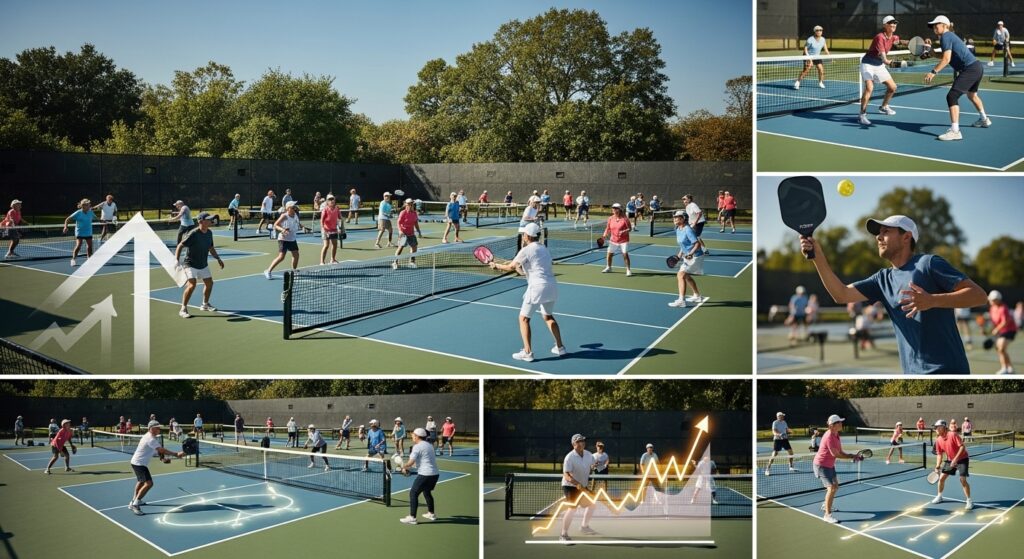
Pickleball Growth Statistics: The Numbers Don’t Lie
To truly understand the phenomenon, we need to look at the hard data. The pickleball popularity statistics paint a clear picture of a sport undergoing explosive, sustained growth across multiple metrics, from player numbers to infrastructure development.
Participation and Demographic Shifts
The most compelling statistic is the sheer volume of new players. As mentioned, the US alone accounts for an estimated 36.5 million people who have played the sport. This rapid adoption is why it’s consistently labeled the fastest growing sport USA.
What’s particularly interesting is the shift in pickleball demographics. For years, the sport was stereotyped as being for seniors. While older adults remain a core and active part of the community, the largest segment of players is now much younger. Recent data shows that the average age of a pickleball player has dropped significantly.
- Youth Movement: The fastest-growing demographic is players under 24. Schools, colleges, and community centers are increasingly adding pickleball to their sports programs.
- The Core Players: While millions play casually, the number of “core” players (those who play 8 or more times a year) has also grown substantially, indicating a high level of retention.
- A Sport for Everyone: The player base is remarkably diverse. It includes families looking for an activity everyone can enjoy, former athletes from sports like tennis and racquetball seeking a lower-impact alternative, and complete newcomers drawn in by the social atmosphere.
The Explosion of Courts and Clubs
Player growth naturally fuels demand for places to play. Across the US, there are now over 11,000 locations to play pickleball, according to USA Pickleball’s official count. This number is growing daily. The expansion is happening in several ways:
- New Construction: Dedicated pickleball complexes with a dozen or more courts are being built by private companies and municipalities. These venues often feature pro shops, food and beverage options, and event spaces.
- Court Conversions: A common and cost-effective strategy is converting underutilized tennis courts. A single tennis court can be transformed into four standard pickleball courts, dramatically increasing player capacity.
- Private and Residential Courts: The trend has even reached backyards, with a growing number of homeowners building their own private courts.
The pickleball clubs growth is another key indicator. These organizations are crucial for fostering community, organizing leagues, and hosting tournaments. They provide a structured environment for both social and competitive play, helping to sustain local interest and onboard new players.
Media and Search Trends
Online interest is a powerful proxy for real-world popularity. Google Trends data for the search term “pickleball” shows a steep, upward curve over the past five years, with interest peaking annually during the summer months. This sustained search volume indicates a growing public curiosity and a constant influx of people seeking to learn more about the sport.
Media coverage has also played a significant role. Major sports networks like ESPN and CBS now broadcast professional pickleball tournaments, exposing the sport to millions of viewers. Lifestyle magazines, news outlets, and online publications frequently run stories on why pickleball is so popular, further amplifying its visibility.
Why Is Pickleball the Fastest-Growing Sport?
The meteoric rise of pickleball isn’t an accident. It’s the result of a perfect storm of factors that make it uniquely appealing to a broad cross-section of society. Its core attributes—accessibility, social connection, and affordability—have created a powerful engine for growth.
1. Easy to Learn, Fun to Master
Perhaps the most significant factor is its gentle learning curve. Unlike tennis or golf, which can require hours of lessons just to become competent, a beginner can learn the basic rules of pickleball and be playing a fun, competitive rally within 20 minutes. The smaller court (44 feet by 20 feet) means less ground to cover, and the underhand serve is simple to execute.
The equipment also contributes to this accessibility. The paddle has a large sweet spot, and the plastic wiffle-like ball travels at a much slower speed than a tennis ball. This makes it easier to track the ball and sustain rallies, which is the fun part of any racquet sport. While the basics are easy, the sport has a high ceiling for skill. Advanced players utilize complex strategies involving dinks, drives, lobs, and drops, making the game endlessly engaging for those who wish to improve.
2. A Truly Social Sport
Pickleball is inherently social. The smaller court size places players closer together, fostering conversation and camaraderie between points. The common format for recreational play is “open play,” where players rotate partners and opponents after each game. This system allows individuals to show up at a court alone and be integrated into games immediately, making it easy to meet new people.
This strong community aspect is a major draw. Players often organize social events, potlucks, and group outings. The friendly, welcoming atmosphere at most pickleball courts stands in contrast to the more formal and sometimes intimidating environments of other sports. For many, pickleball is as much a social activity as it is a form of exercise.
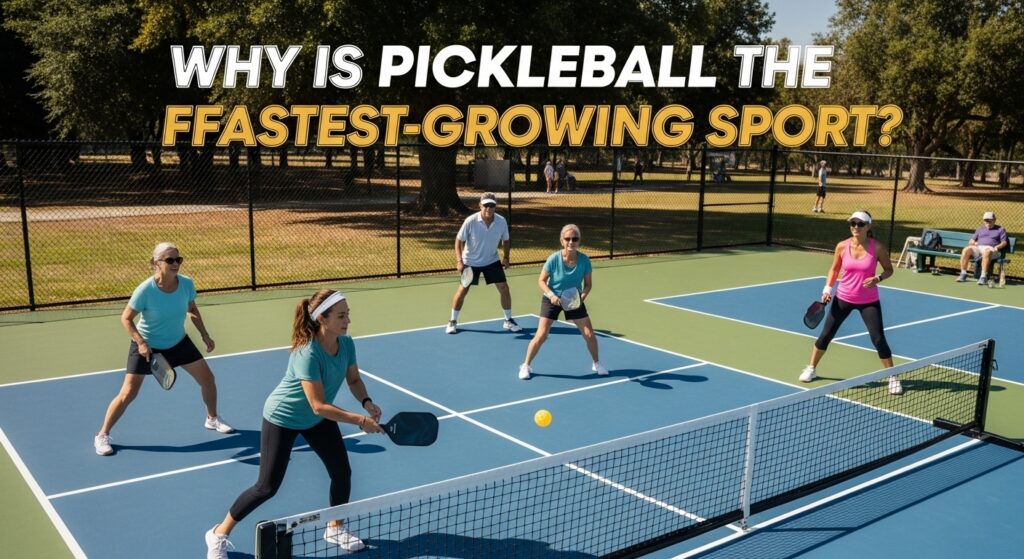
3. Affordability and Accessibility
Compared to many other sports, the financial barrier to entry for pickleball is very low.
- Equipment: A starter paddle and a few balls can be purchased for less than $50. While high-end paddles can cost over $200, they are not necessary for beginners.
- Court Access: Many public parks and community centers offer free or low-cost access to pickleball courts.
- Attire: There is no strict dress code. Standard athletic wear and court shoes are all that’s needed.
This affordability makes it accessible to people from all economic backgrounds, a key factor in its widespread adoption. The smaller court size also means that facilities can be built in more diverse locations, including urban areas where space is limited.
4. Health and Wellness Benefits
Pickleball provides excellent physical and mental health benefits for all ages. It’s a fantastic cardiovascular workout that improves balance, agility, and reflexes. Because it’s a lower-impact sport than tennis or running, it is easier on the joints, particularly the knees and hips. This makes it a sustainable form of exercise for older adults or those recovering from injuries.
A study published in the International Journal of Research in Exercise Physiology found that middle-aged and older adults who played pickleball three times a week for six weeks showed improvements in blood pressure, cholesterol levels, and cardiorespiratory fitness. Beyond the physical, the social interaction and mental engagement required to play the game help combat loneliness and boost cognitive function.
The Role of Celebrities, Social Media, and Pro Leagues
While the grassroots appeal of pickleball laid the foundation, its recent hyper-growth has been supercharged by powerful modern amplifiers: celebrity investors, viral social media content, and the emergence of professional leagues.
Celebrity Endorsements and Ownership
When influential figures embrace a trend, the public takes notice. Pickleball has benefited immensely from a wave of celebrity enthusiasm. Entrepreneurs like Gary Vaynerchuk and Brené Brown have been vocal proponents of the sport. But the biggest boost has come from the world of professional athletics.
NFL legends Tom Brady and Drew Brees, NBA superstars LeBron James, Kevin Durant, and Draymond Green, and tennis champions Kim Clijsters and James Blake have all invested in professional Major League Pickleball (MLP) teams. Their involvement lends immediate credibility and generates massive media attention. When figures like the Kardashians are seen playing pickleball on their shows, it introduces the sport to a completely new, mainstream audience. This “cool factor” has been instrumental in shifting the demographic toward younger players.
Social Media’s Viral Loop
Platforms like TikTok, Instagram, and YouTube have been instrumental in showcasing the fun and excitement of pickleball. Short, dynamic video clips of incredible rallies, funny on-court moments, and beginner tutorials go viral, reaching millions of potential players. The hashtag #pickleball has billions of views on TikTok alone.
Social media serves as both an introduction and an educational tool. Aspiring players can watch instructional videos to learn the rules and basic techniques before they even step on a court. This digital word-of-mouth marketing is incredibly effective and has accelerated the sport’s adoption rate at a pace that would have been impossible in a pre-internet era.
The Rise of Professional Pickleball
The establishment of professional tours has transformed pickleball from a recreational pastime into a legitimate spectator sport. The two main professional organizations are:
- The PPA Tour (Professional Pickleball Association): This tour focuses on individual player rankings, featuring traditional tournament brackets for singles, doubles, and mixed doubles. It attracts the top players in the world who compete for significant prize money.
- Major League Pickleball (MLP): MLP features a unique, co-ed team-based format that emphasizes energy and excitement. The league has attracted high-profile team owners from sports and business, creating a model similar to other major American sports leagues.
The professionalization of the sport creates an aspirational path for young athletes and provides high-quality content for broadcast and streaming. Watching elite players like Ben Johns, Anna Leigh Waters, and Catherine Parenteau execute incredible shots elevates the perception of the sport and inspires recreational players to improve their own games.
Will Pickleball Be in the Olympics?
With its explosive global growth, the question on many minds is: Is pickleball going to the Olympics? The path to Olympic inclusion is long and complex, but the sport is making significant progress.
The Path to Olympic Recognition
For a sport to be considered for the Olympic Games, it must be governed by an International Federation (IF) that is recognized by the International Olympic Committee (IOC). The sport must also meet certain criteria for global participation. According to the Olympic Charter, a sport must be practiced widely by men in at least 75 countries and on four continents, and by women in at least 40 countries and on three continents.
The International Federation of Pickleball (IFP) is the global governing body working towards this goal. With over 70 member nations, it is steadily approaching the required participation threshold. In 2023, a significant development occurred with the formation of the Global Pickleball Federation (GPF), a new body backed by the PPA Tour and other entities aiming to unify the sport’s Olympic bid. Unity under a single, recognized international federation is a critical step in the process.
Current Status and Future Prospects
As of now, pickleball is not an Olympic sport. It has not yet achieved full IOC recognition. However, momentum is building. The sport’s inclusion in other major multi-sport events, such as the African Games and potentially the Pan American Games, serves as a crucial stepping stone.
Experts believe that the earliest pickleball could realistically be included in the Olympics is the Brisbane 2032 Games. The Los Angeles 2028 Olympics have already finalized their new sports (including squash and flag football), making it too late for pickleball to be added to that program. The bid for 2032 will require a consolidated effort from the global pickleball community, continued growth in participation across all continents, and a clear, unified governance structure. While the road is long, the ambition is strong, and many within the sport are optimistic about its Olympic future.
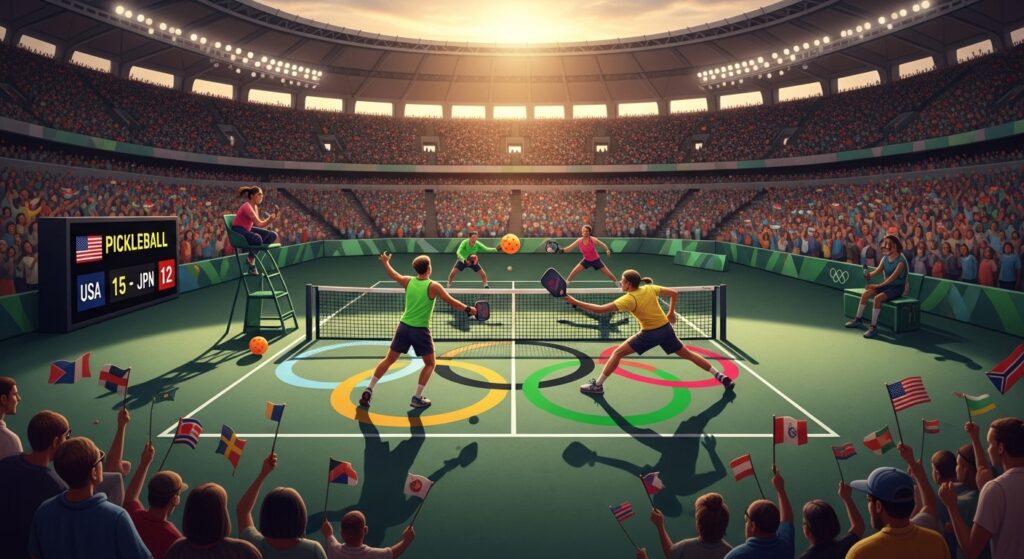
Is Pickleball a Fad or Here to Stay?
Whenever something grows this quickly, the question inevitably arises: Is pickleball just a fad? Is it the 21st-century equivalent of Pogs or the Macarena—a flash in the pan destined to fade away once the novelty wears off? While some level of hype will naturally settle, the evidence overwhelmingly suggests that pickleball is here to stay.
Arguments for it Being a Fad
Critics often point to the intense media hype and celebrity involvement as signs of a bubble. They argue that the current frenzy is unsustainable and that participation may decline as the trendiness wanes. Some also cite neighborhood conflicts over court noise and the rapid, sometimes chaotic, growth as potential threats to its long-term stability. The pickleball trend 2025 might look different than today, but a complete collapse is unlikely.
Arguments for Long-Term Sustainability
The case for pickleball’s longevity is far more compelling and is rooted in deep structural foundations.
- Massive Infrastructure Investment: Cities, private companies, and individuals are investing hundreds of millions of dollars in building dedicated pickleball facilities. This physical infrastructure is permanent and will serve communities for decades to come. Unlike a fad, pickleball is literally being built into the landscape of our towns and cities.
- Integration into Institutions: Pickleball is being integrated into school PE curriculums, university intramural programs, and community center schedules. When a sport becomes institutionalized, it ensures a steady stream of new players from younger generations.
- A Thriving Professional Scene: The professional leagues, with their broadcast deals and high-profile investors, provide a stable, commercial ecosystem for the sport. This creates jobs, media content, and an aspirational peak for the sport that helps sustain public interest.
- Inherent Appeal: The core reasons for pickleball’s popularity—its accessibility, social nature, and health benefits—are timeless. These are not trendy attributes; they are fundamental human desires for community, fun, and well-being.
- A Diverse and Committed Player Base: The sport has built a massive, multi-generational community of passionate players. This grassroots foundation is the strongest defense against the “fad” label. Millions of people have now integrated pickleball into their regular social and fitness routines.
Sports analysts predict that while the astronomical growth rates may eventually level off, the high participation numbers are here to stay. Pickleball has reached a critical mass where it can sustain itself for the long term.
Also Read Pickleball Court Guide: Dimensions, Setup & Cost to Build One ?
The Future of Pickleball: Predictions and Trends
The future of pickleball looks exceptionally bright. The pickleball rising sport narrative is set to continue as it expands its footprint globally and solidifies its position in the mainstream sports landscape.
Predictions for the US, UK, and Globally
- United States: The pickleball future predictions for the US point towards market maturation. We will see the development of more premium, multi-purpose pickleball venues that combine sport with entertainment (“eatertainment”). The amateur tournament scene will become more organized, and college-level (NCAA) pickleball will likely emerge as a sanctioned sport.
- United Kingdom: The pickleball growth UK will accelerate as more dedicated courts are built and the sport gains recognition from national sports bodies. Expect to see more media coverage and the emergence of home-grown professional players.
- Globally: Asia and South America represent huge, untapped markets. We can expect explosive growth in these regions over the next decade. The drive for Olympic inclusion will further standardize the rules and fuel development programs in emerging pickleball nations. The pickleball vs tennis popularity debate will continue, but the two sports are increasingly seen as complementary rather than purely competitive.
The future will also see continued innovation in equipment, with paddles and balls becoming more advanced, as well as the use of technology and data analytics to improve player performance and fan engagement.

Frequently Asked Questions (FAQs)
Why is pickleball suddenly so popular?
Its popularity surge is due to a combination of factors: it’s extremely easy for beginners to learn, it’s a very social game that builds community, it’s affordable to start, and it provides great exercise for all ages. This grassroots appeal was amplified by celebrity endorsements, social media trends, and the growth of professional leagues.
How many people play pickleball worldwide?
While exact figures are difficult to confirm, based on the 36.5 million players in the US and growing numbers in Canada, Europe, and Asia, a conservative estimate places the number of worldwide players at over 40 million, and this figure is growing rapidly every day.
Will pickleball replace tennis?
It’s highly unlikely that pickleball will replace tennis. The two sports can and do coexist. Many tennis players also play pickleball, and vice versa. While pickleball is growing faster in terms of new participants, tennis has a long-established global professional tour and deep cultural roots. A more likely scenario is that pickleball will continue to convert some underused tennis courts, but both sports will maintain healthy player bases.
Is pickleball a professional sport?
Yes, pickleball is a professional sport. There are two major professional tours, the PPA Tour and Major League Pickleball (MLP), where professional athletes compete for millions of dollars in prize money. These events are broadcast on major sports networks like ESPN, CBS Sports, and Tennis Channel.
Conclusion: More Than Just a Game
The rise of pickleball is a fascinating story of how a simple backyard invention can grow to capture the hearts of millions around the globe. Its journey from a local pastime to the fastest-growing sport in America is a testament to its unique blend of fun, fitness, and friendship.
The evidence is clear: pickleball is not a fleeting fad. With a solid foundation of millions of passionate players, ever-expanding infrastructure, and a booming professional scene, this sport is firmly cementing its place in the global sporting landscape. The statistics, the celebrity endorsements, and the grassroots energy all point in the same direction. The pop of the pickleball paddle is a sound that is here to stay, inviting more and more people to step onto the court and discover the joy of the game for themselves.
